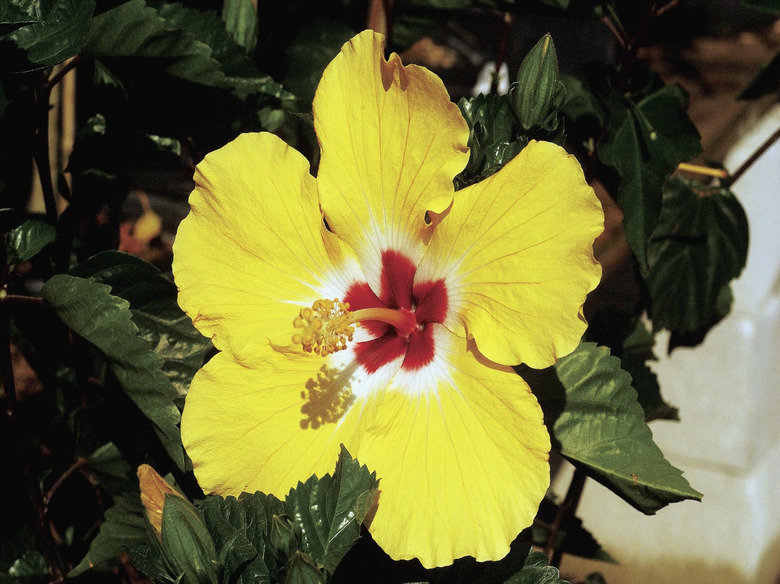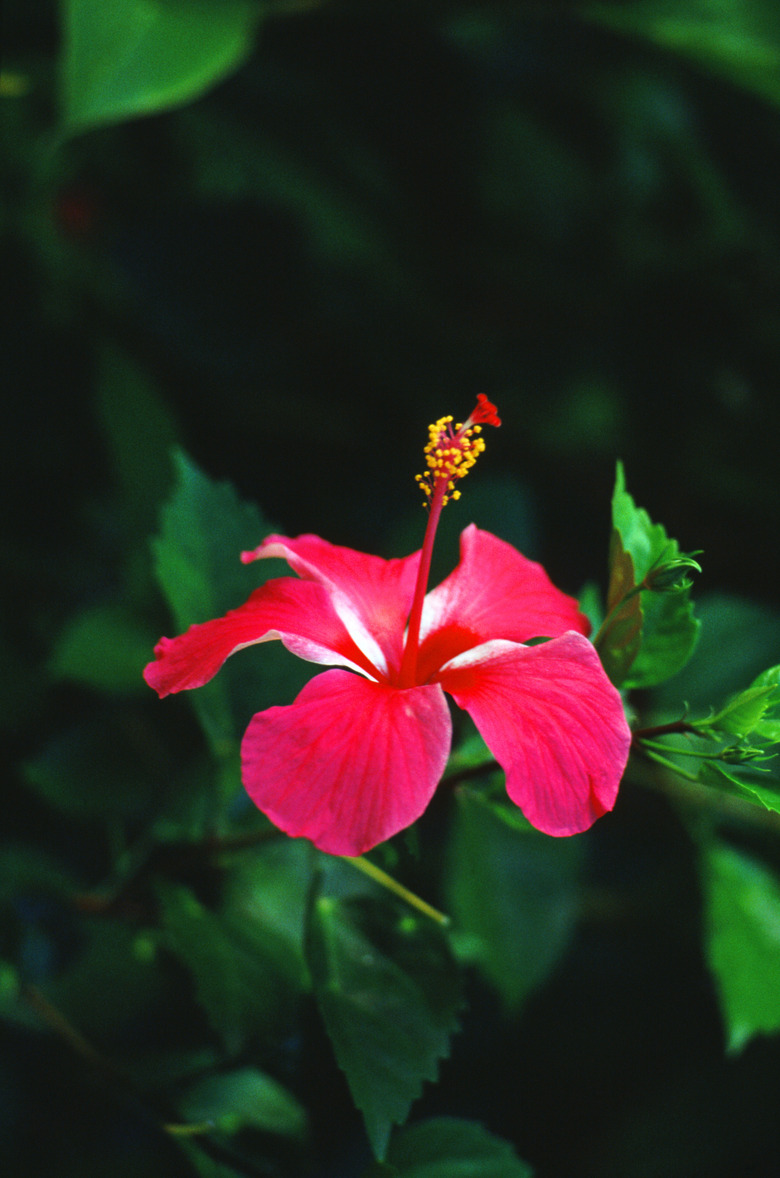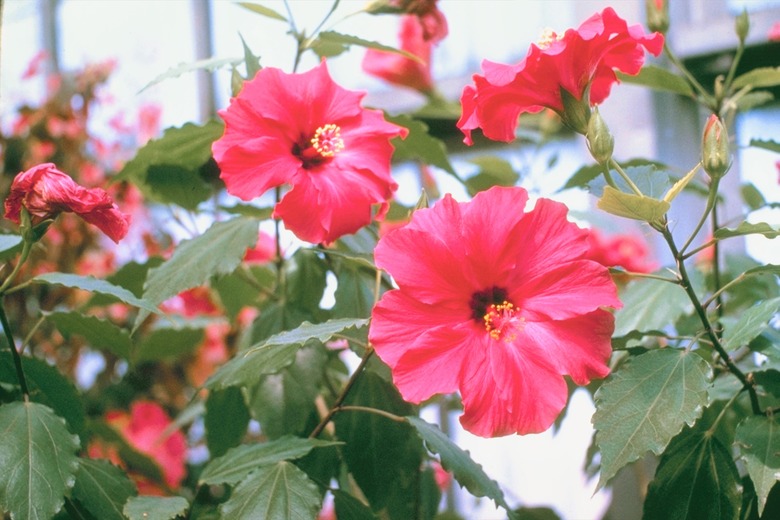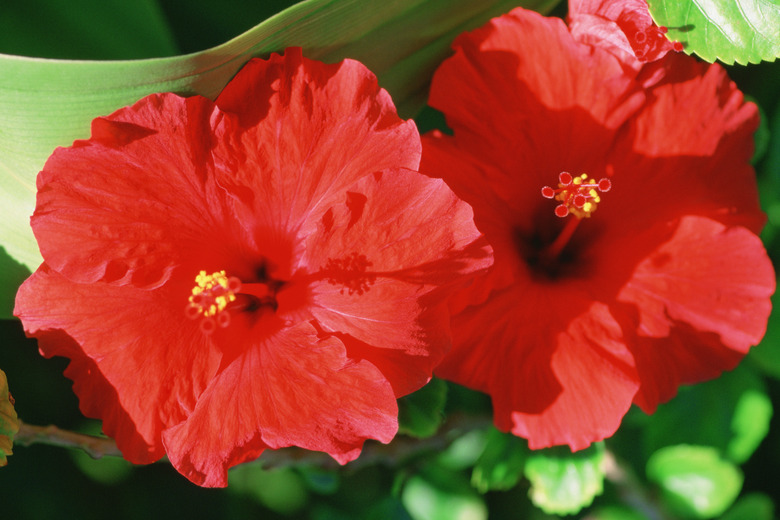Can You Split An Outdoor Hibiscus Plant At The Root?
Many species of hibiscus plants or shrubs exist, some of which are perennial or hardy and others are tropical hibiscuses that are grown as annuals or as houseplants in nontropical hardiness zones where winters consist of several months of subfreezing temperatures. Hibiscuses are very fast-growing plants, so splitting or dividing them at the root is an effective way to promote new and healthier growth and provide plants with more room to spread out.
Hibiscus Types
Tropical hibiscuses are characterized by their dark-green, almost glossy leaf color and flowers in bright colors such as orange, yellow and red. These hibiscuses are not hardy in places where freezes last longer than a few hours. Hardy or perennial hibiscuses tolerate freezing temperatures, and with the exception of rose of Sharon, a variety of hibiscus that flowers off the previous year's woody growth, these plants die down to the ground at winter.
Why Divide Hibiscuses?
Hibiscuses are fast-growing shrubs known for their deep and extensive root systems. Typical indicators that plants need dividing include sparse foliage at the bottom of plants, bare spots in the center and fewer blooms and smaller flowers. These are indications that the massive root ball is not able to provide sufficient nourishment to all parts of the plant.
When to Divide
The general rule regarding the division of perennials is that perennials that bloom in spring and summer are divided in fall, and perennials that bloom in fall are divided in spring. Most perennials require dividing every three to five years. Hibiscuses are a bit different because in warmer climates, hardy hibiscuses can bloom from spring until frost, and in tropical areas, tropical hibiscuses (Hibiscus rosa-sinensis) may bloom year-round. Ideally, you should not divide plants when they are flowering. Most perennial hardy hibiscuses generate new growth in spring, so the best time to divide them is early in spring just after the first new growth emerges. Because rose of Sharon (Hibiscus syriacus) plants develop new growth and bloom off the previous year's woody stems, divide these plants in fall once they finish blooming and begin to enter dormancy. Divide tropical hibiscuses when they are not blooming or when dormant when grown as houseplants.
How to Divide
To divide hibiscuses planted in the ground, dig deep into the ground so you can remove the entire root ball from the planting hole. Extensive root systems will likely render container-grown plants root or pot bound. Tap the bottom of the pot to free the root ball from the pot. Once the plants are out of the ground or container, spray the root ball with water to remove as much soil as possible. Use a sharp pruning knife or saw to cut the root ball into smaller divisions. Plant the newly divided plant sections immediately and water deeply. Continue to water regularly to ensure that new divisions establish themselves.
References
- Virginia Cooperative Extension; Rose of Sharon, Shrub Althea; Carol Ness; May 2009
- Clemson Cooperative Extension; HGIC 1179 Hibiscus; Karen Russ; December 2004
- Texas A&M University AgriLife Extension Galveston County Office; Creating the Tropical Look: Low-Care Tropicals for the Upper Gulf Coast of Texas; William M. Johnson




